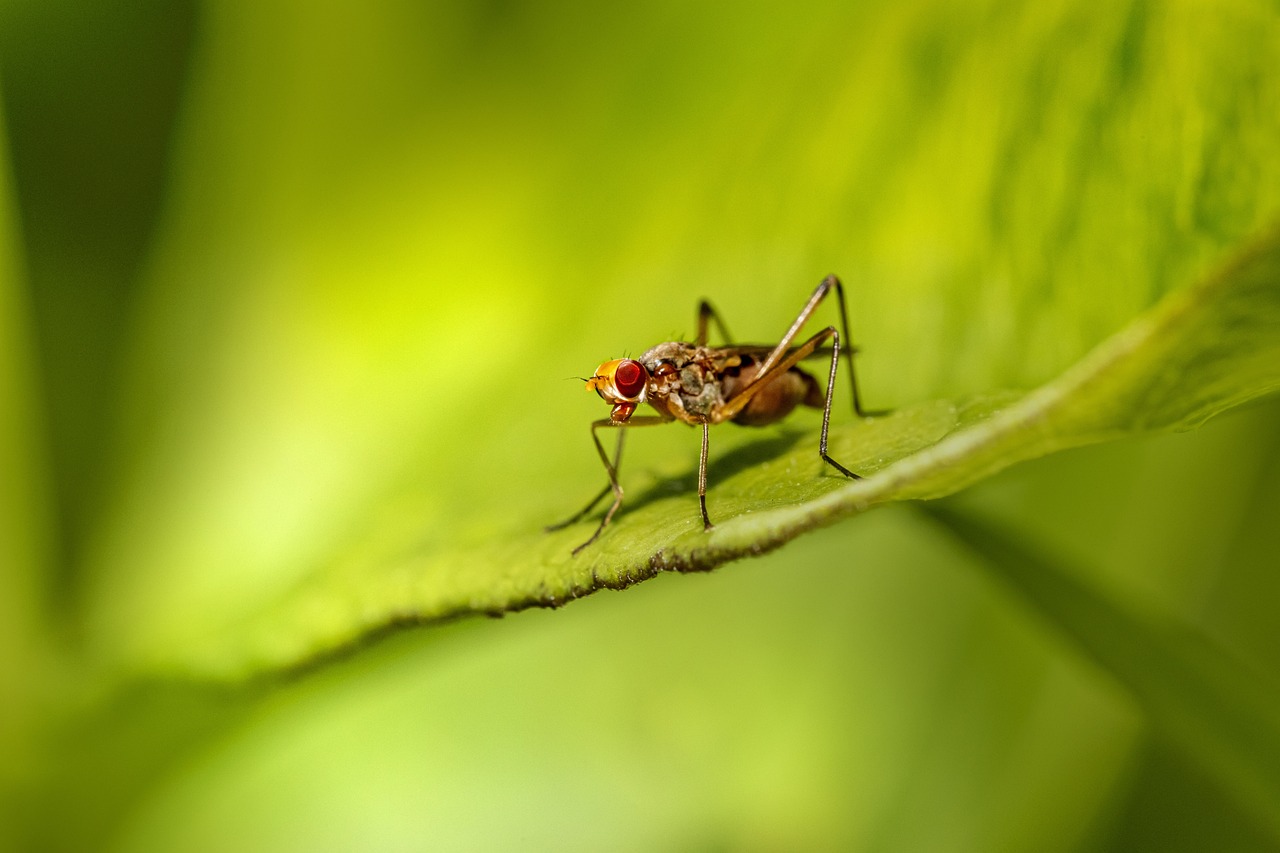The stilt-legged fly, Micropeza corrigiolata, is a member of the Micropezidae family, known for its long, slender legs and distinctive appearance. Here’s a detailed overview of this intriguing insect:
Description
- Size: Micropeza corrigiolata is a medium-sized fly, with a body length typically ranging from 5 to 10 millimeters.
- Appearance:
- Body: These flies have an elongated body that is often dark in color, sometimes with metallic or reflective hues.
- Legs: Their most distinctive feature is their long, slender legs, which resemble stilts and are significantly longer than those of many other flies. This adaptation gives them their common name.
- Wings: They have clear wings with few markings, held flat over the abdomen when at rest.
- Head: The head is small with prominent compound eyes and short antennae.
Habitat
- Distribution: Micropeza corrigiolata is found in various parts of Europe and Asia, inhabiting temperate regions.
- Preferred Environment: These flies are commonly found in grassy areas, fields, and meadows, often near decaying organic matter, which serves as their primary food source and habitat for their larvae.
Behavior and Ecology
- Feeding: Adult stilt-legged flies primarily feed on nectar, plant sap, and decaying organic matter. The larvae are detritivores, feeding on decomposing plant material and fungi.
- Mimicry and Defense: Their long legs and distinctive posture often mimic that of ichneumonid wasps or spiders, providing a form of protection against predators through Batesian mimicry.
- Movement: Micropeza corrigiolata exhibits unique and somewhat erratic movement patterns, often raising and lowering their front legs while walking, which enhances their wasp-like appearance.
Reproduction
- Mating: Little is specifically documented about the mating behaviors of Micropeza corrigiolata, but like other flies, they likely involve complex courtship behaviors that include visual and chemical signals.
- Egg Laying: Females lay eggs in decaying plant matter or soil, where the larvae will have an abundant food supply upon hatching.
- Development: The larvae undergo several stages of development (instars) before pupating and eventually emerging as adults.
Conservation Status
- Threats: While there is no specific conservation status listed for Micropeza corrigiolata, habitat destruction and the use of pesticides pose general threats to fly populations.
- Conservation Efforts: Conservation efforts for such species generally focus on preserving natural habitats and reducing pesticide usage to protect the various insect populations that contribute to ecosystem health.
Interesting Facts
- Mimicry: Their mimicry of wasps and spiders is a fascinating adaptation that helps deter predators. This is an excellent example of how insects can evolve to resemble more dangerous species to avoid being eaten.
- Ecological Role: By feeding on decaying organic matter, both adults and larvae play a crucial role in the decomposition process and nutrient cycling within their ecosystems.
Observing Micropeza corrigiolata
- Best Places: To observe these flies, visit grassy fields, meadows, and areas with abundant decaying plant material in their natural range across Europe and Asia.
- Watching Tips: Look for their distinctive, stilt-like legs and erratic movement patterns. Early morning or late afternoon might be the best times to spot these insects as they are active during these periods.
Micropeza corrigiolata is a remarkable example of the diversity and adaptability of flies. Their unique appearance and ecological role make them an interesting subject of study and observation in the field of entomology.
Visited 862 times, 8 visit(s) today
Views: 1280
Subscribe to the newsletter:
